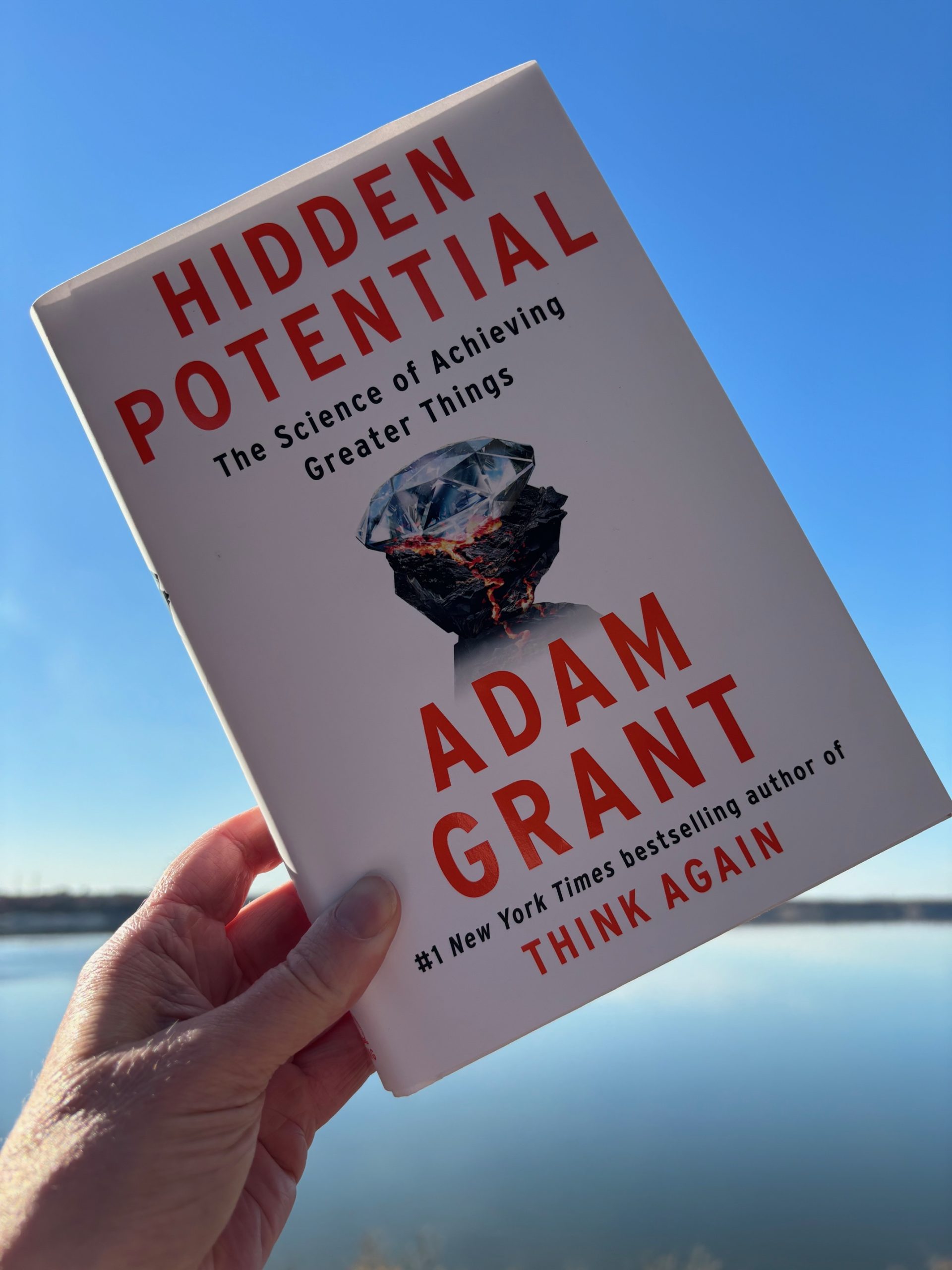
This blog was originally published on the Dog-Eared Books website.
Are you living up to your highest potential? Are you helping others do the same?
Would you like to?
We all have the capacity to accomplish great things and make a meaningful difference, and Adam Grant’s latest book, Hidden Potential, offers guidance and ideas for doing just that. This book is a fantastic read at any time, but particularly at the start of the new year – with insights we can apply to our growth and goals throughout 2024 and beyond!
If you’re new to Adam Grant, he holds quite an impressive background: he’s an organizational psychologist, a top-rated professor at The Wharton School, the author of multiple books (including one of my all-time favorites, Think Again), a highly-viewed TED Talk presenter, a podcast host, and more. His research and writing have been widely published and acclaimed, including an article you may have come across when it went viral in 2021 about languishing – a topic he also addresses in Hidden Potential.
Grant brings his research, experience, and signature voice to every page of this latest release. Interspersed with stories, personal examples, and even cartoon drawings, readers can easily find themselves fully engaged in the text while learning practical strategies to implement in work, relationships, and life.
For starters, Hidden Potential is a terrific resource for:
• Getting unstuck – including identifying what may have brought us to feeling stuck in the first place, such as burnout or boreout (more on that below). “A rut is not a sign that you’ve tanked. A plateau is not a cue that you’ve peaked,” explains Grant. “They’re signals that it may be time to turn around and find a new route.”
• Enhancing motivation. From practicing music scales or sports drills repeatedly, to thriving even in repetitive work routines, Grant shares inspiring stories of people who have put the book’s concepts into practice and boosted their motivation as a result. I love the example of Nurse Quick Shot, an allergy nurse who used the concept of harmonious passion (described fully in the book) to bring ideas into her work that made it more enjoyable while also putting her patients at ease.
• Helping others fulfill their potential, whether our children, students, employees, team members, or others with whom we connect. From the questions we ask, to the behaviors we model, to the coaching we offer, to numerous other areas, Hidden Potential highlights the value in uncovering and fulfilling our own potential while also supporting others in doing the same.
Grant is exceptional at providing evidence-based suggestions in a conversational tone, offering a wide range of examples to help us relate them to our own experience. I’ve never had dreams of becoming an astronaut, for example, but in reading the story of José Hernandez – an individual Grant highlights who did have that dream and overcame significant odds as he pursued it – I found myself taking tips from his experience and applying them to the goals and dreams I do have. Reading such profound stories of real-life people taking action to fulfill their highest potential is inspiring in and of itself; partnered with actionable practices we can put into place makes us unstoppable.
Throughout Hidden Potential, we are also introduced to a number of concepts that may be completely new to us but become so useful once learned. A new-to-me word I mentioned earlier – boreout – is one such example: Unlike burnout, which Grant describes as the emotional exhaustion we experience when we feel overloaded or overwhelmed, boreout is the emotional deadening we experience when we are under-stimulated. Both impact our capacity to engage at our highest potential but can stem from different sources. Other concepts include languishing, deliberate play, and harmonious passion, to name a few. Being able to recognize what we’re experiencing, as well as give it a name, may help us formulate solutions and/or get the help and support we need in order to thrive.
I particularly appreciate Grant’s point about how fulfilling our potential isn’t only about setting new goals or achieving greater heights; it’s also found in resilience, shifting gears, and bouncing back. We may feel like we’re failing – or at least not succeeding – when we discover we need to slow down or backtrack a bit, and thus berate ourselves for not moving more quickly. “Beating yourself up doesn’t make you stronger,” writes Grant, “it leaves you bruised.” Recognizing growth even in the challenging times is a valuable part of unleashing our hidden potential – an easily-overlooked but important reminder.
If you’ve read Hidden Potential and want to discuss it, or if you haven’t read it yet and want to learn more, join me on January 24, 6pm, at Dog-Eared Books in Ames! During this inaugural session of Your Best Self book club, we’ll chat about the book’s standout stories, helpful concepts, and how we can apply the ideas to our lives, work, and interactions. It will be an engaging conversation and a fabulous way to kickstart the new year!





